Last updated on December 11, 2023
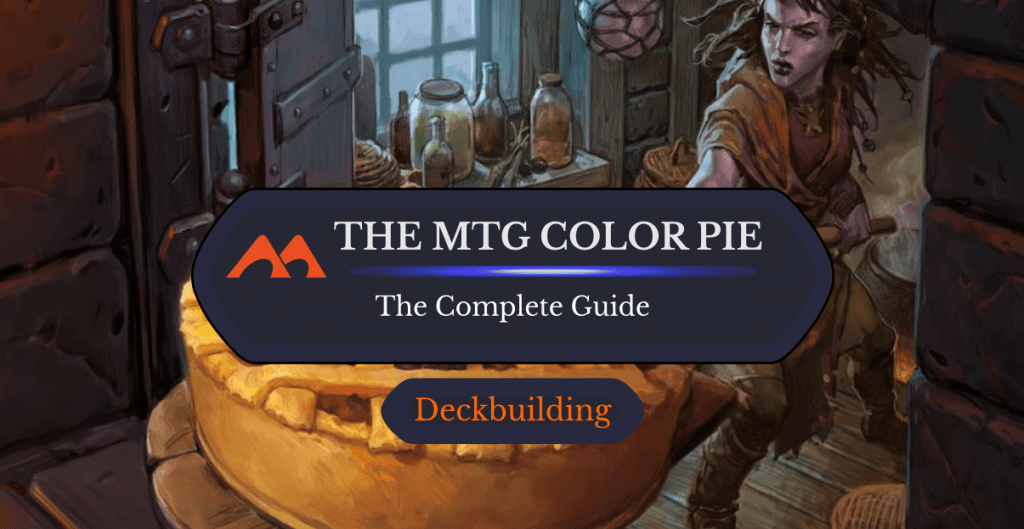
Bake into a Pie | Illustration by Zoltan Boros
The color wheel, or “color pie” as you’ve probably heard more often, is one of MTG’s defining traits. It’s part of what makes the game so unique and successful.
If you look on the back of any paper Magic card you own, you’ll see the iconic cluster of five colored pips. These represent the colors in the game. Starting from the top and going in a clockwise circle we have white, blue, black, red, and green.
While there are plenty of other depictions and charts of the color pie, the simplest and most basic one will always be on the back of your cards. So let’s talk about it.
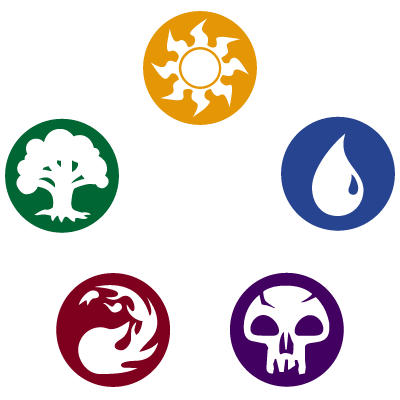
What Makes the Color Pie Important?
The color pie helps visualize how the colors interact with each other. Each color is “allied” with its adjacent colors while the ones opposite each other are “enemies” to one another. Allied colors work well together and have similar mechanics and play styles, while enemy colors have differing values and mechanics that tend to oppose each other.
There’s more to it than just their physical place in the pie, however. The colors in MTG are also fundamental instruments of game mechanics and player psychology. However, they are also subject to small changes over time.
Each color has its own ideology and personality. We’ll get deeper into that a little further down, but for now think about how mono-colored decks tend to usually have the same kind of play style. Red decks tend to be aggressive and wild. They flow freely and find damage wherever they can as you unleash as much raw power as you can muster. Green likes to get big with strength in numbers as nature to runs rampant. White acts to control chaos and bring order to the battlefield as much as possible.
When we start combining colors, these apparent personalities start to work with or against each other. The color pie helps define all of this. It helps us as players and WotC as developers know what’s going on in each color. The game encourages a wide variety of strategies and play styles that can all be simplified and better understood through the color pie.

Color Wheel Breakdown
All right. It’s time to get to the beefy portion of this discussion. There are always exceptions to the rules, but let’s color inside the lines for now and get to know our monochromatic friends a little bit better with some flavor. We’ll also cover each color’s primary, secondary, and tertiary mechanics. Even the order in which they go in!
They all have unique responsibilities in the game and certain mechanics come naturally to each color. Then we have the secondary ones that are less commonly seen. Finally, there are mechanics that each color is tertiary to, meaning they’re rarely seen and only come around once every so often.
Let’s get started.
White
Sticking to the color pie, we’ll start with white and move in a clockwise circle.
White values peace and prosperity above all else, using structure and uniformity to achieve this. It lays down laws and rules and then strives to uphold them. Suffering happens when people act selfishly, and white believes this can be avoided if everyone acts for the group rather than for themselves.
Although white works towards peace through laws and unity, there’s a danger in leaning too far into this concept. While it wants people to follow their values of their own free will, white will sometimes lead them down this path by force.
You’ll find strength in numbers and the means with which to lay down and uphold the law in white cards.
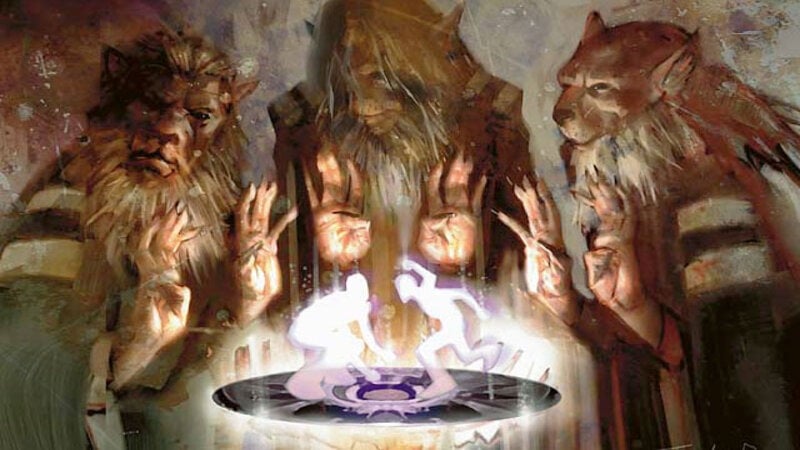
Rule of Law | Illustration by Scott M. Fischer
Allies
White allies with green and blue.
In its alliance with green as Selesnya, the two colors come to value the strength of the group above all else. They strive for the group to become powerful beyond what its members could ever be on their own.
White agrees with blue’s concept of restraint and planning as Azorius. Blue values perfection and sees an avenue to obtain this perfection in white. By forming plans with the highest success rate over longer periods of time and restraining themselves when they begin to get reckless, these colors look to solidify and more efficiently uphold the uniformity and law that they create.
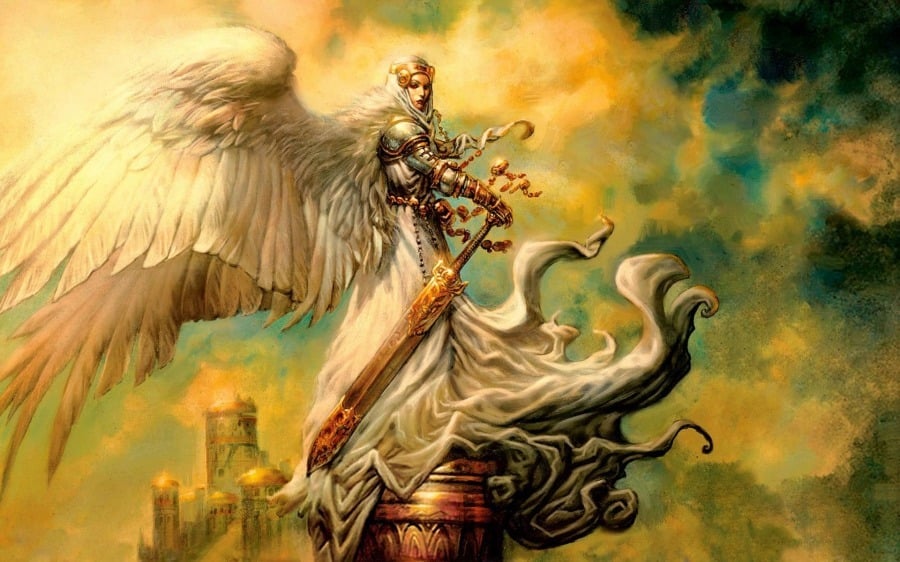
Empyrial Archangel | Illustration by Greg Staples
Enemies
White finds enemies in black and red.
Black is a color that puts down everything that white has worked to create and uphold, even if they come together as Orzhov. Because black sees laws and rules as limitations and acts in seemingly selfish ways to obtain what they want, white regularly clashes with it.
With red, white only sees those who desire to not act uniformly. Red’s attachment to emotion and impulse breaks away from white’s concept of abandoning emotion and impulse for the sake of the collective. Red would readily embrace chaos rather than tolerate order, making Boros a marriage of opposite forces.
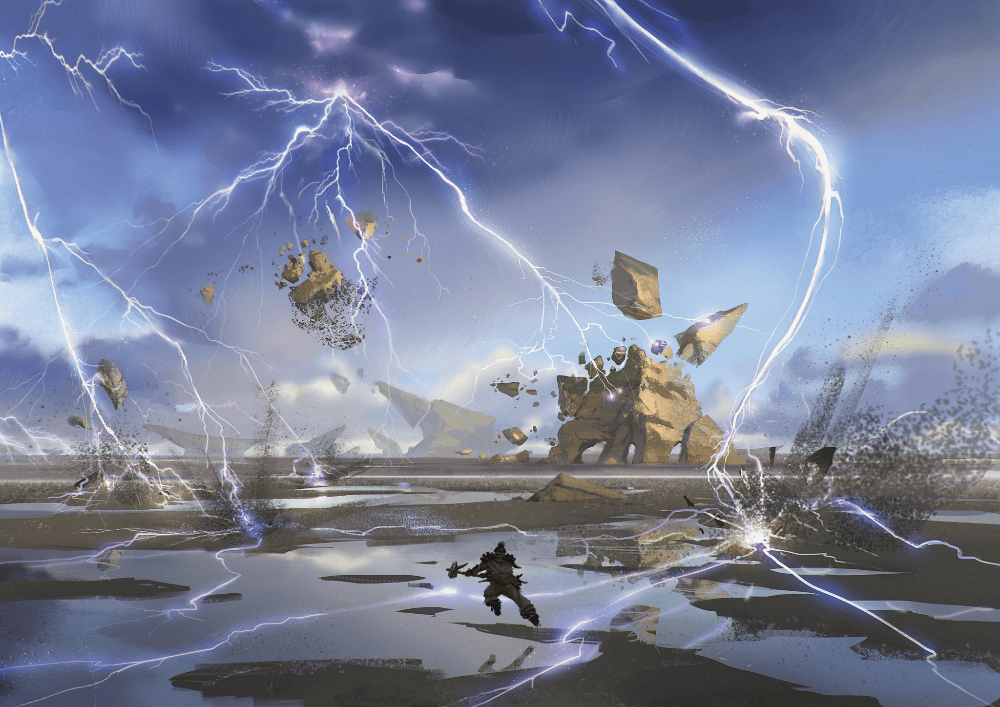
Crackling Doom | Illustration by Yohann Schepacz
Mechanics
While I could just say that white is built around themes like anthems that strengthen the team, effects that protect a group or punish wrongdoings, you’ll probably be happier with an actual list of white’s mechanics. Here you go:
| Primary Mechanics | Secondary Mechanics | Tertiary Mechanics |
|---|---|---|
|
|
|
Blue
Blue values knowledge, perfection, and discovery. It values a logistical way of thinking and believes that there’s no need to recklessly rush into situations. Blue carefully considers what actions are worth taking to solve a problem before doing anything.
Blue is interested in technology, knowledge, and self-improvement above all else. It’s better to carefully choose from all of your options rather than act impulsively. As a slow and methodical color, blue has an answer to most questions and is constantly looking for more. You’ll find in blue cards, the ability to solve any problem through planning and preparation as well as wide versatility in many adverse situations.
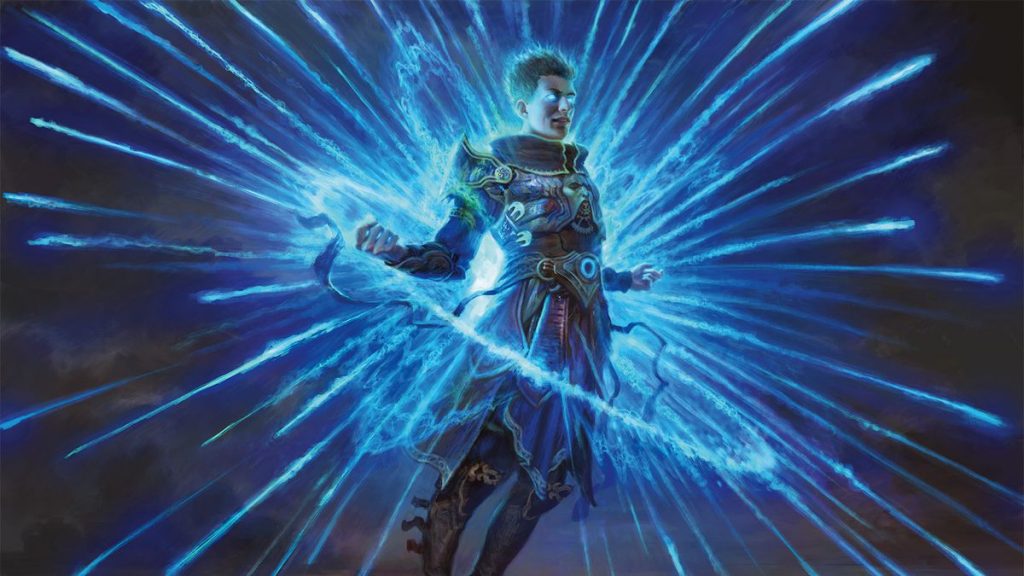
Counterspell | Illustration by Zack Stella
Allies
Blue allies the best with white and black. It finds ways to achieve the perfection it strives for in both of these colors.
With white, blue sees the value in cooperation and restraint as Azorius. Together they achieve their goals through cooperation at an efficient pace. With restraint they can save themselves from straying from the path towards perfection.
Blue and black come together as Dimir and complement each other through the freedom to experiment without restriction. Black prides itself on disregarding the limits of morality and law in order to achieve what they want. To blue, this way of thinking leads to new avenues that they can travel in their pursuit for knowledge and perfection.
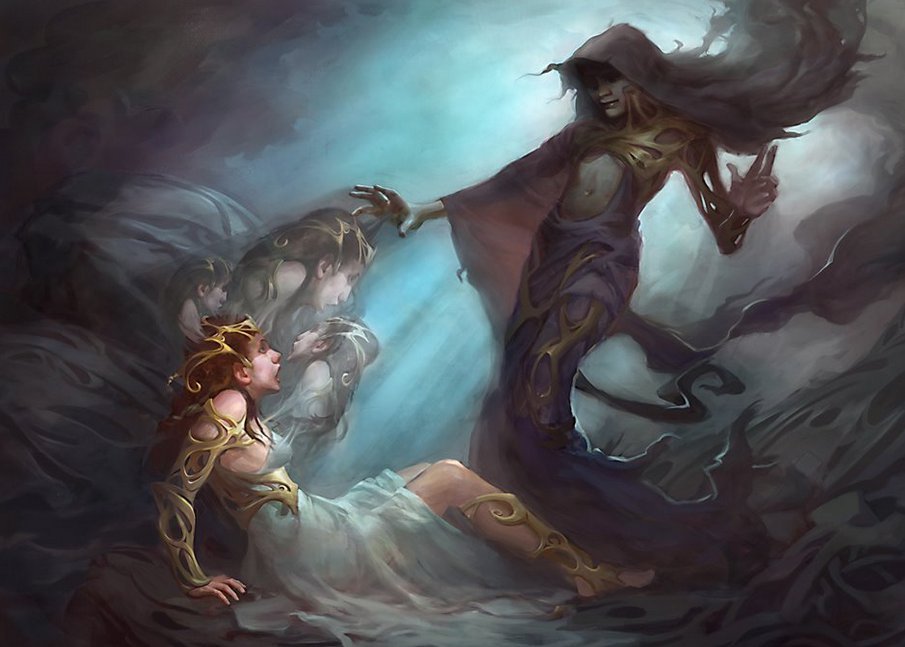
Punish Ignorance | Illustration by Shelly Wan
Enemies
Blue rivals the most against red and green.
While blue is logical, calculated, slow, and methodical, red is impulsive and reckless, acting on instinct and emotion. Blue believes that this blinds them from the knowledge and improvement they seek. Red is to blue as the right brain is to the left brain, making Izzet a chaotic combo.
When it comes to green, blue sees savage beings that refuse to improve. Green is too stuck in their ways. Tradition and acceptance mean nothing if it causes stagnation. Blue would rather improve beyond nature than stay behind with it, and Simic’s conflict is one of technology versus nature.
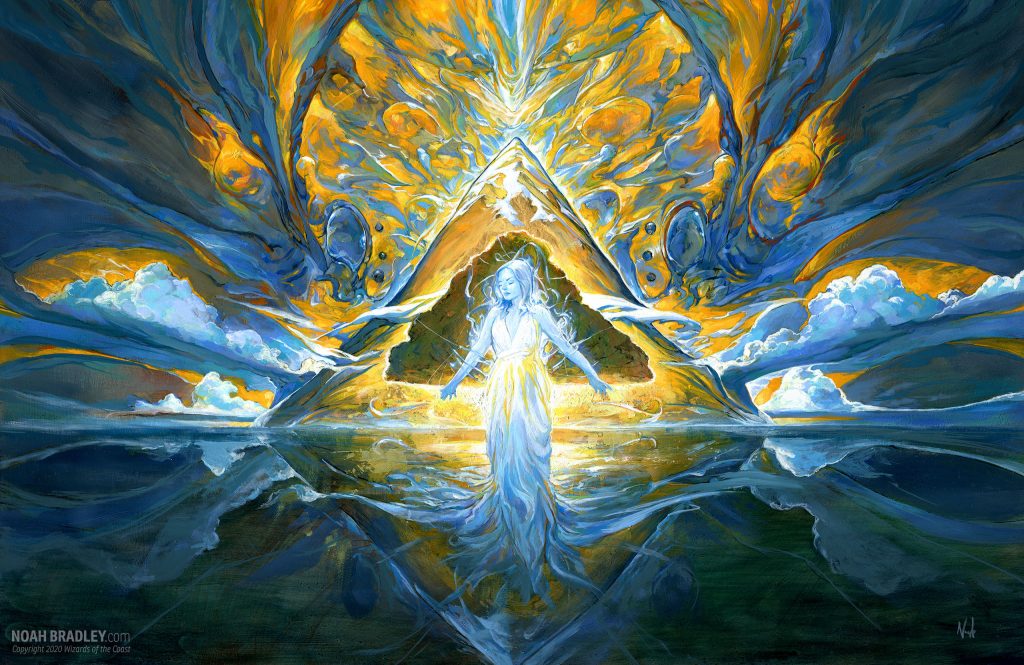
Song of Creation | Illustration by Noah Bradley
Mechanics
Blue prides itself on being able to manipulate the flow of the game with information and resources. Be it drawing cards, manipulating the top of your deck, learning what your opponent has before they play it, and stoppping it before it can resolve, here’s a list of what blue can do:
| Primary Mechanics | Secondary Mechanics | Tertiary Mechanics |
|---|---|---|
|
|
|
Black
Many people see black as a source of evil in MTG, but that’s not what black is. Black is the color of freedom. It holds itself to no restrictions. To black, the concept of right and wrong solely depends on whether or not the ends justify the means.
Black isn’t afraid to cross lines the other colors would never even toe in order to achieve their goals. You’ll find that death isn’t a strange concept in black since it can be used as a tool to achieve their goals. Black cards have no issue targeting weak links and taking advantage of the misfortune of others.
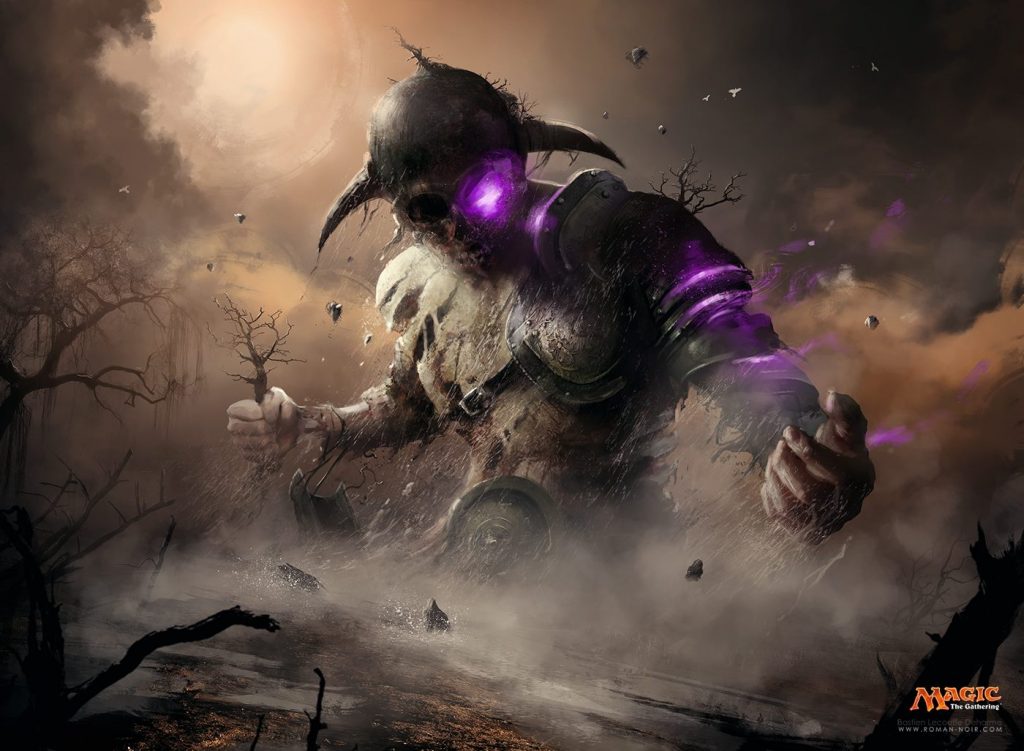
Animate Dead | Illustration by Bastien L. Deharme
Allies
Black allies itself with blue and red more readily than the other colors.
With blue, black agrees with the knowledge that can be had and used. Seeing the world for what it is, Dimir works together to exploit that world to strive for strength and success.
In red, black sees like-minded beings. Red likes to do what it wants, while black likes to get what it wants. Coming together as Rakdos, these colors show the purest form of a selfish act. They don’t care about consequences if they’re strong enough to ignore them.
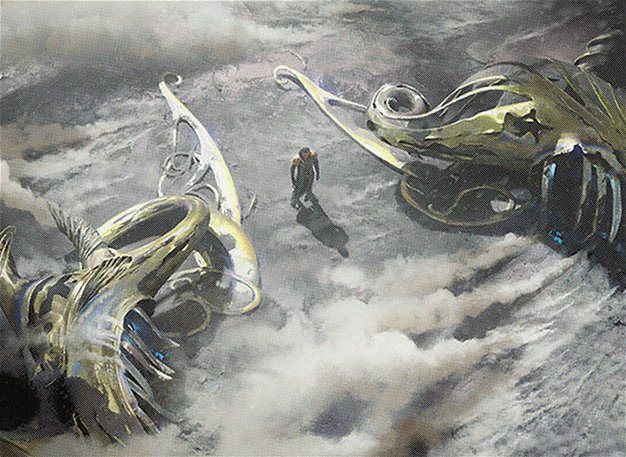
Dark Intimations | Illustration by Chase Stone
Enemies
Black wars with white and green.
Black only sees obstacles to what they want to achieve when it comes to white. If black is freedom, white is restriction and black doesn’t like that. The conflict in Orzhov can be construed as “good vs. evil,” but who falls where depends entirely on which side you find yourself.
When black looks at green, it sees too much tradition and reliance on fate. Green believes everything is as it should be and that they must accept their place. Black believes that the natural order is meant to be messed with. The debate between these two in Golgari is less “how to live” and more “how to take advantage of what exists.”

Death's Oasis | Illustration by Grzegorz Rutkowski
Mechanics
Black is as ruthless as it is free. Focusing on death, destruction, disease, creature sacrifice and underhanded tactics as well as bargains and pacts, black seeks to use any means possible to claim victory. Let’s take a deeper look at the mechanics I’m referring to here:
| Primary Mechanics | Secondary Mechanics | Tertiary Mechanics |
|---|---|---|
|
|
|
Red
Red is the color of passion and emotion. This can lead anywhere. It can drive them to do right, and it can drive them to cause chaos. At the end of the day, red sees a world bound by rules and restrictions but doesn’t want to worry about them.
Red wants to act according to its emotions and it wants to do it as soon as possible. Looking past the apparent chaos in red cards, you’ll find explosive spells that tear through your opponent’s defenses and life totals with raw, unadulterated power.
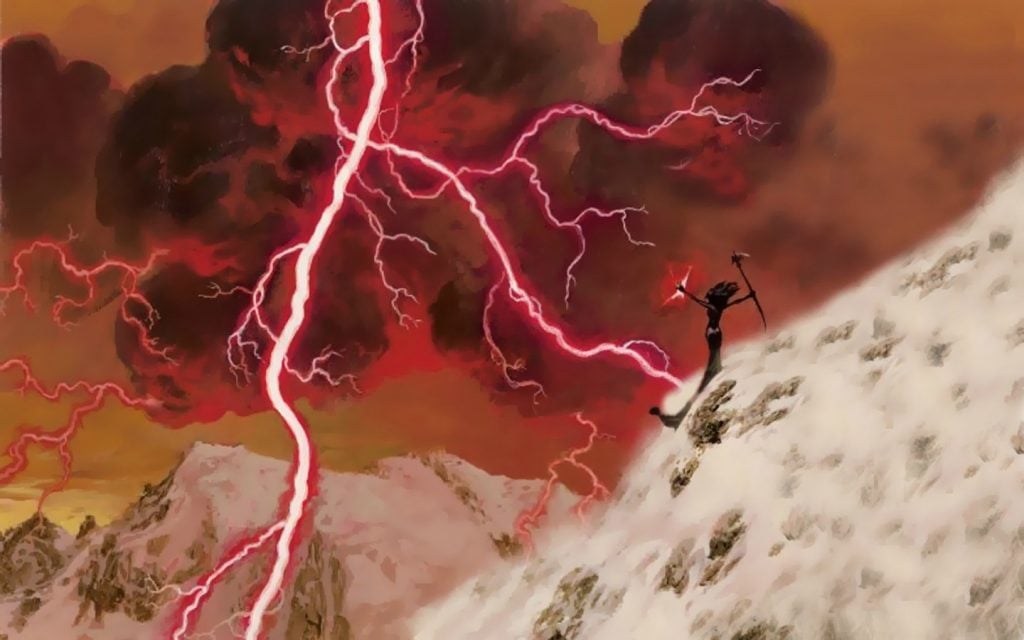
Lightning Bolt | Illustration by Christopher Moeller
Allies
Red allies itself easily with black and green.
When paired with black, the two form a bond that disregards the limits of one’s world. Rakdos seeks to act on what they want, and they aren’t afraid to do whatever it takes to get there. They make a dangerous and wild duo when properly mixed.
Red also finds companionship with green as Gruul. Green acts on instinct the same way red acts on impulse. They’re very disorganized yet extremely focused on their goals. These two colors have a one-track mind and nothing can get in the way of what their instinct and desire tells them to reach for.
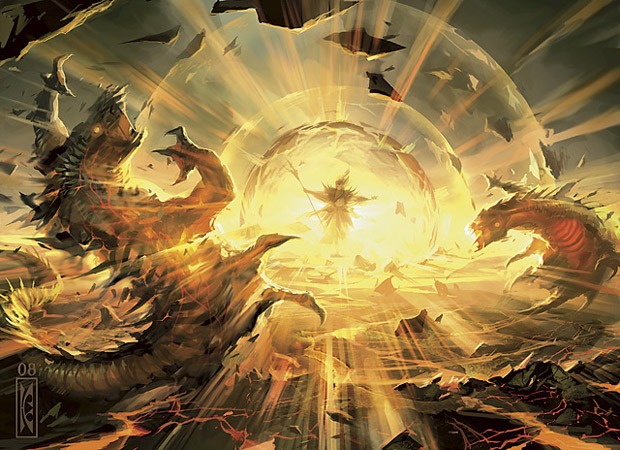
Violent Ultimatum | Illustration by Raymond Swanland
Enemies
Red disagrees with blue and white more than anything else.
Blue is a force that has buried all emotion in order to progress. Red believes this is wrong and that blue has only hindered itself by forgoing their natural impulses. Izzet’s argument is one of emotion vs. logic.
Against white, red sees those that seek to control the impulses and emotions they embrace so dearly. After all, it’s silly to punish people for expressing themselves, right? White is a tyrannical controller to red. They’ve forgone the importance of the individual to obtain their idea of perfection. The life that white strives for is pale and without freedom. The argument between Boros is chaos vs. law.
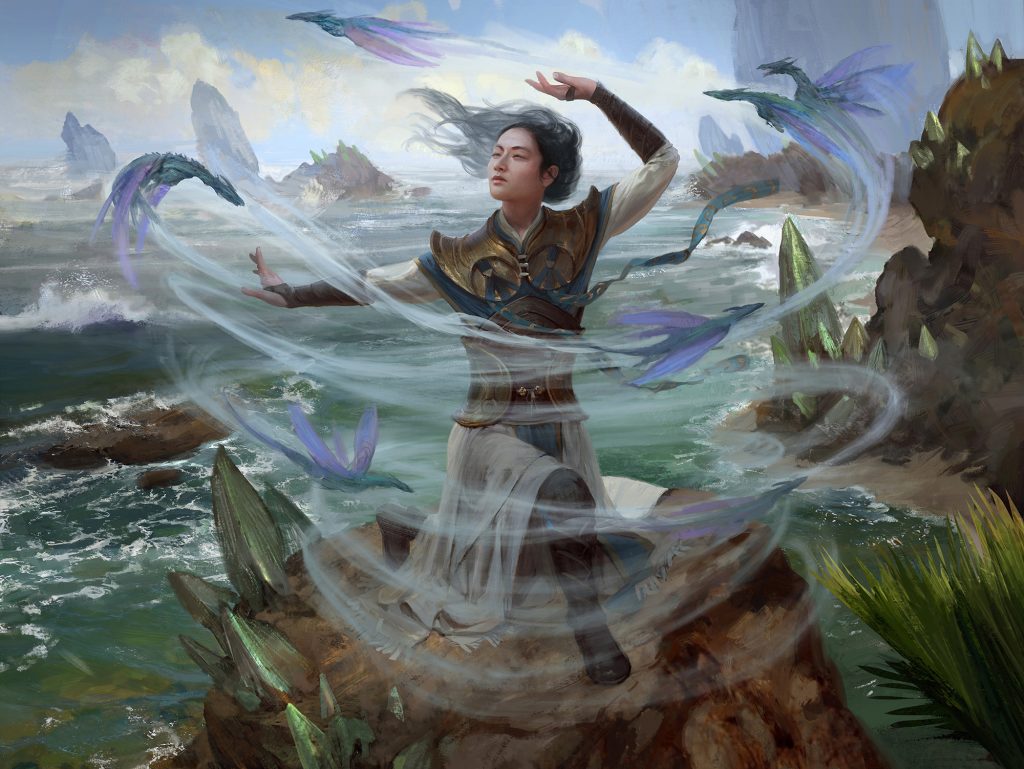
Whirlwind of Thought | Illustration by Bram Sels
Mechanics
Red, being a color of action and aggression, prides itself in tearing up its opponents through resource destruction while hammering home haymakers with direct damage and fast, powerful creatures. It also has ways to temporarily expedite its spell-slinging and get crafty with tricks to stay a step ahead of everyone else. Take a look:
| Primary Mechanics | Secondary Mechanics | Tertiary Mechanics |
|---|---|---|
|
|
|
Green
Green is the color of tradition and coexistence. It believes there’s no better world than what currently exists and that everything is the way it is for a reason. There’s no need to regulate or improve anything or even take advantage of it.
Green believes everything should depend on the world around it and that the greatest strength is found in what already exists rather than what could exist. What already exists works and what could exist sets off the natural balance. There’s no focus on changing how things are. The potential to do big things is already within green cards and there’s no need to chase after something when what you already have is more than enough.
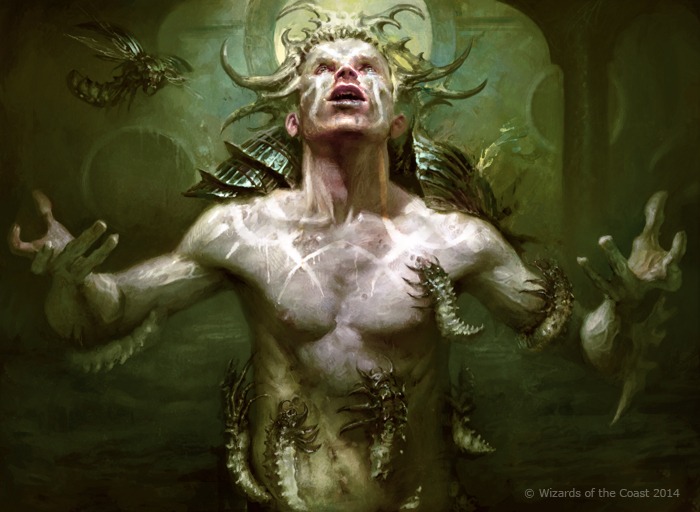
Greater Good | Illustration by Mathias Kollros
Allies
Green allies the best with red and white.
With red, green agrees that there’s no need to overthink or be bound by rules and laws. Gruul will face anybody head-on and act on their impulse and instinct, not worrying about planning or rules.
Green agrees with white when it comes to the importance of the group. Interdependence is a big thing for green, and white’s focus on the community is easily accepted. Selesnya disagrees with the idea of taking advantage of the group for personal gain.
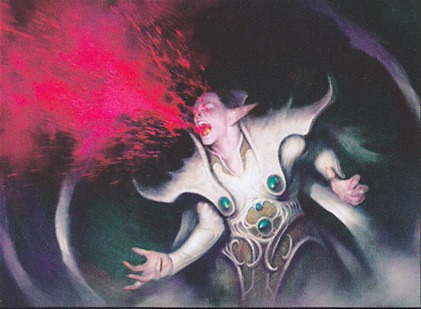
Fiery Justice | Illustration by Mathias Kollros
Enemies
Green disagrees with black and blue on fundamental and moral levels.
It stands against blue because of its tendency to perfect and evolve. It relies on technology and artifacts and “improving” what already exists, while green believes that none of this is necessary. Simic comes together as two opposite forces.
Against black, green believes in preserving what exists. While Golgari sees the world more for what it is than what it could be, black is prepared to upset the natural order to get what it wants. Green doesn’t like this and believes nothing could be gained from taking advantage of one another. Everything has a place, and to disrupt that for selfish gain goes against green’s philosophy.

Titan's Nest | Illustration by Cliff Childs
Mechanics
Green relies on what the world already is and everybody’s place in it. Green seeks out lands like no other color, drawing strength from a plane's core. A creature’s natural potential to evade and just generally be more powerful than everything else lies squarely in the center of their values. Not to mention the ability to draw out a creature’s potential while crushing artifice and illusion. Here are the details:
| Primary Mechanics | Secondary Mechanics | Tertiary Mechanics |
|---|---|---|
|
|
|
Colorless
Obviously, colorless isn’t a color. Yes, colorless cards have their own mechanics in eldrazi like annihilator, devoid, and ingest. But that still doesn’t make it a color or an artifact.
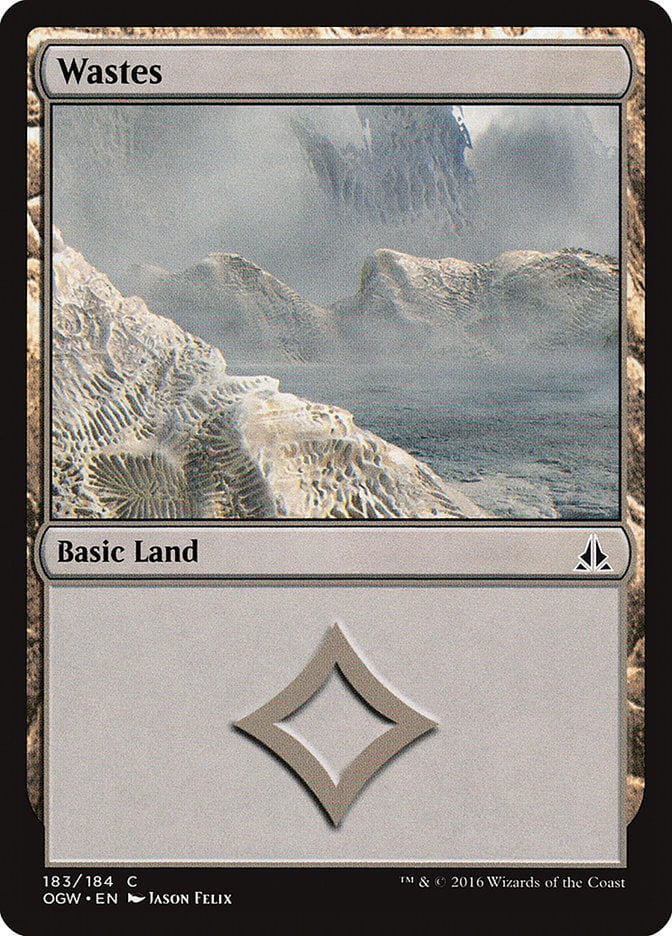
It stands out a bit with its own mana source that it sometimes needs to call on, but you’ll generally see colorless cards doing things that any of the colors could do. The only drawback being you might have to pay a bit more to pull it off. Nothing super big, but definitely worth noting when it comes to colorless cards’ standing in relation to everything else.
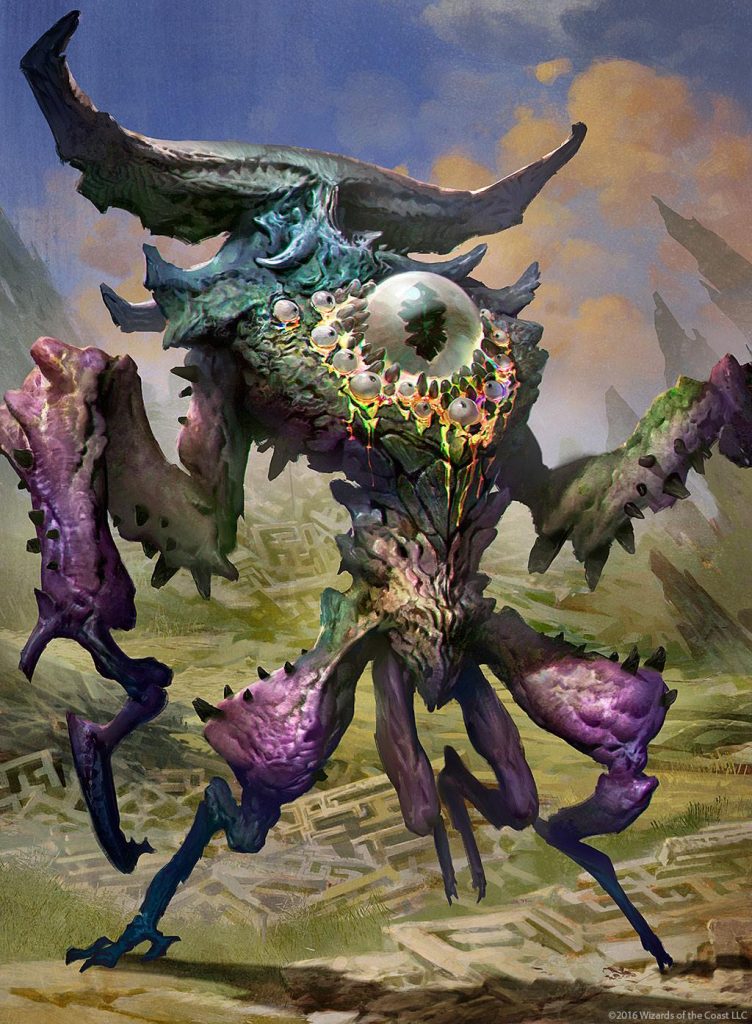
Thought-Knot Seer | Illustration by Svetlin Velinov
Combinations and Interactions
Well, that took a while. Anyways, you’re probably sitting here thinking, “Okay, I know how each of these colors think now (I guess), but how does that help me as a player? And I know for a fact that these enemies you’re talking about have common combinations. What gives?”
Well, I’ll get into that. Let me start by saying that yes, even enemies have common grounds. All colors in magic combine with each other for a unique output and play style. But this is more about the individual colors at their core, so let’s focus on that for now.
Player Personalities
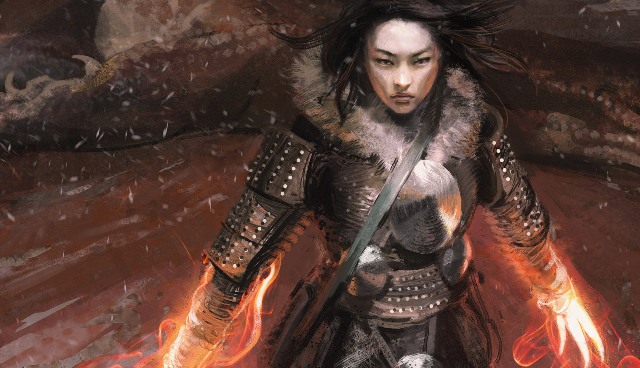
Temur Battle Rage | Illustration by Jaime Jones
Knowing the general philosophy of each color helps but it doesn’t quite explain the connection to your play style. So let’s talk about that.
Each of Magic’s colors has an extremely stereotypical play style and most of the time they don’t literally represent the game plan for every player in that color, but it’s a good start. I mean, I’m a blue mage at heart. I love having answers and information. I always want to know that no matter what happens, I can find what I need when I need it. That isn’t to say I don’t like what other colors have to offer, but blue targets my fundamental desire to know everything and be prepared for anything.
In the end it’s a matter of which color you feel like you understand and resonate with the most. I can’t play as a red mage to save my life, but I know blue like the back of my hand. Find the color that works for you.
White Mage
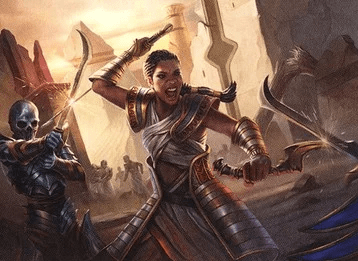
Act of Heroism | Illustration by Magali Villeneuve
If you mostly agree with what white is all about, you prefer building the group up regardless of what some people have to sacrifice or contribute. You want to set the rules and make sure nobody breaks them while your deck plays out.
As a white mage, you’ll tend to play cards that imprison or punish your opponent’s field while gaining life to keep yourself alive and fortify your defenses. You play more like a fortress against a siege than any other color, and setting the rules is your greatest joy. If you enjoy the sound of having walls to protect your loved ones and the strength of an army at your side, then white is the color for you.
Black Mage
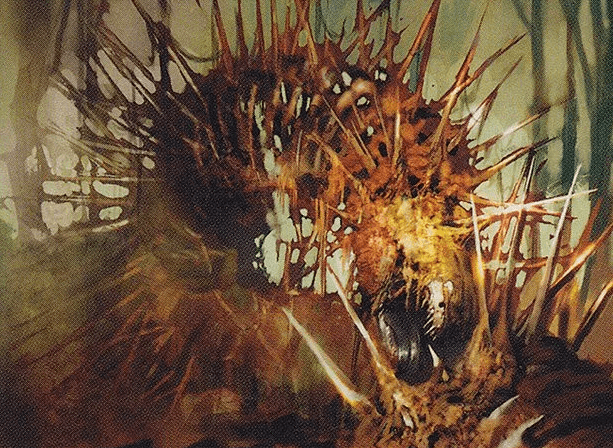
Flesh Allergy | Illustration by Vance Kovacs
Likewise, let’s say you think black’s philosophies sound super cool. You might not care for others as long as you get what you want. Exploit any loophole you can find, even your own creatures, to climb higher and higher. Only the strong survive in this color, and sometimes strong just means sneaky and clever.
You’ll be casting a lot of spells that kill your opponent’s creatures while also sacrificing weak pawns on your side of the field for benefits like card draw or buffs to your stronger creatures, or even more destruction to your opponent. Black might be your favorite color in the pie if you like the idea of inflicting your opponents with ailments and disadvantages that throw a wrench in their plans.
Red Mage

Brimstone Volley | Illustration by Eytan Zana
Red mages are all about casting spells that deal damage and burn through an opponent before they burn out. You have a lot of tricks up your sleeve to give you an unexpected edge. You appeal most to destruction and fast paced spell-slinging.
Blue Mage
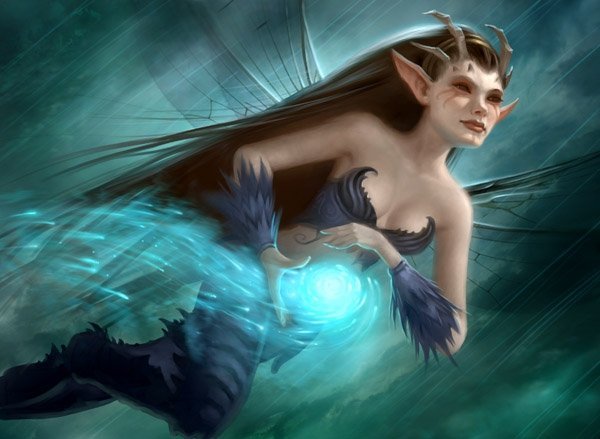
Dream Thief | Illustration by Howard Lyon
Blue mages, on the other hand, like to take it slow and study their opponent. You have counterspells around every corner and like to make sure you have more cards than your opponent at all times. If you think it would be fun to always have options and always have an answer to literally everything your opponent plays, blue is the way to go.
Green Mage
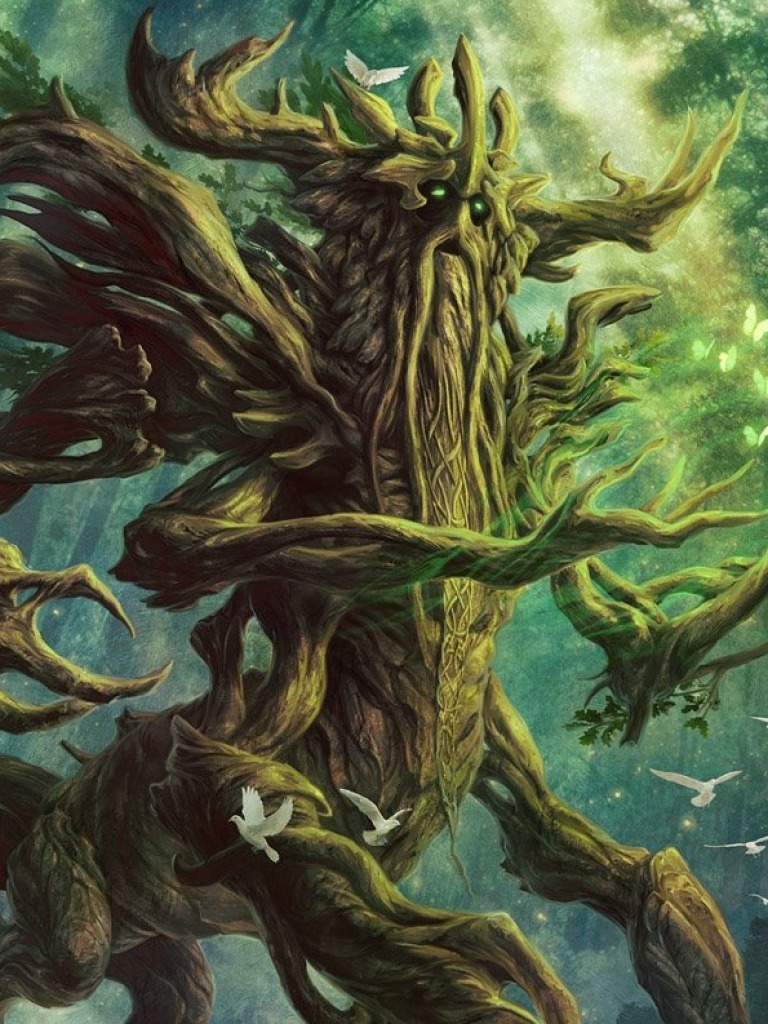
Tuinvale Treefolk | Illustration by Jason A. Engle
Finally we have green mages that like to go big or go home. You’re going to have powerful creatures with huge stats and some mean bonuses as well. You’ll have the means to cancel out artifacts and play tons of cards with tons of mana production as well. If you like the idea of throwing a haymaker punch every single turn without resting, green is your color.
What About the Oddballs?
Sometimes there are cards that don’t make sense in their color. When what the card does isn’t really supposed to happen in that color. These are called “color breaks” and “color bleeds.”
Color Breaks
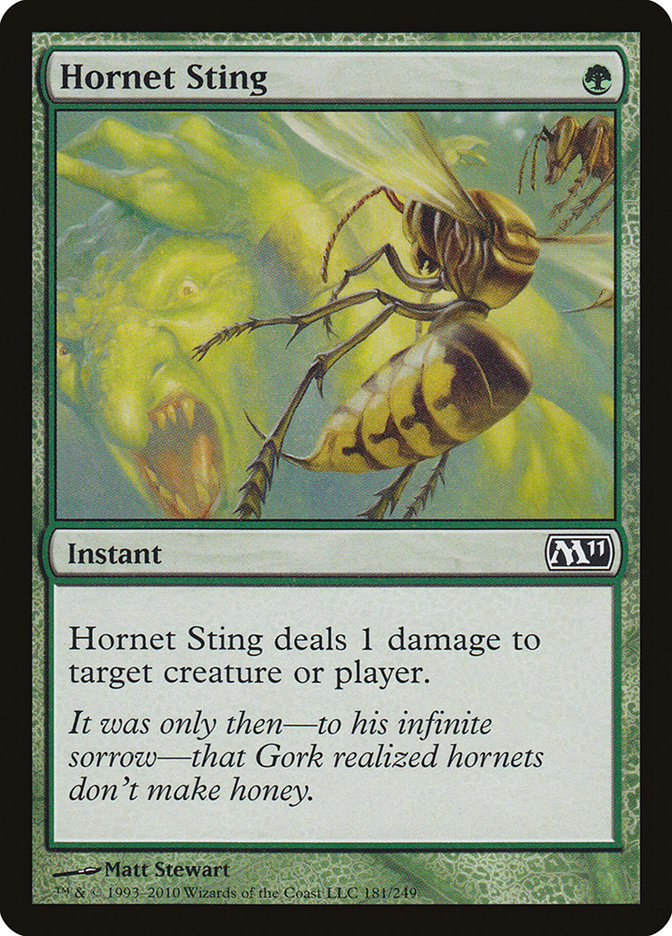
Let’s start with breaks, which are when cards forget their color’s weakness and do something they’re never supposed to do. A good example of this would be Hornet Sting. Green isn’t supposed to have the ability to deal with creatures without its own creatures. This card changed that a little bit when it was printed, because now green had a way to kill opposing creatures outside of combat.
The issue with color breaks, even if they’re done to help a card’s flavor or give a color a bit of fun outside of its box once in a while, is that it breaks the barriers between colors. If blue could start doing things the way red did, who would need to play red anymore? That diversity in game design would be gone, making color breaks extremely dangerous.
Color Bleeds
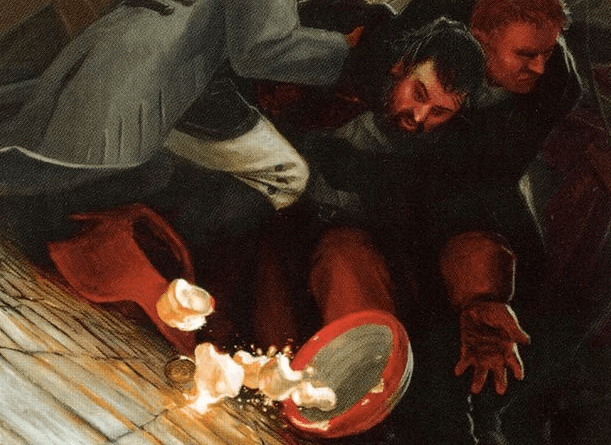
Dangerous Wager | Illustration by Drew Baker
That said, sometimes there’s careful fun to be had in color bending and bleeding. This is when colors get to toe the line of what they’re allowed to do without trudging all over their weakness. Take Form of the Dragon for example.
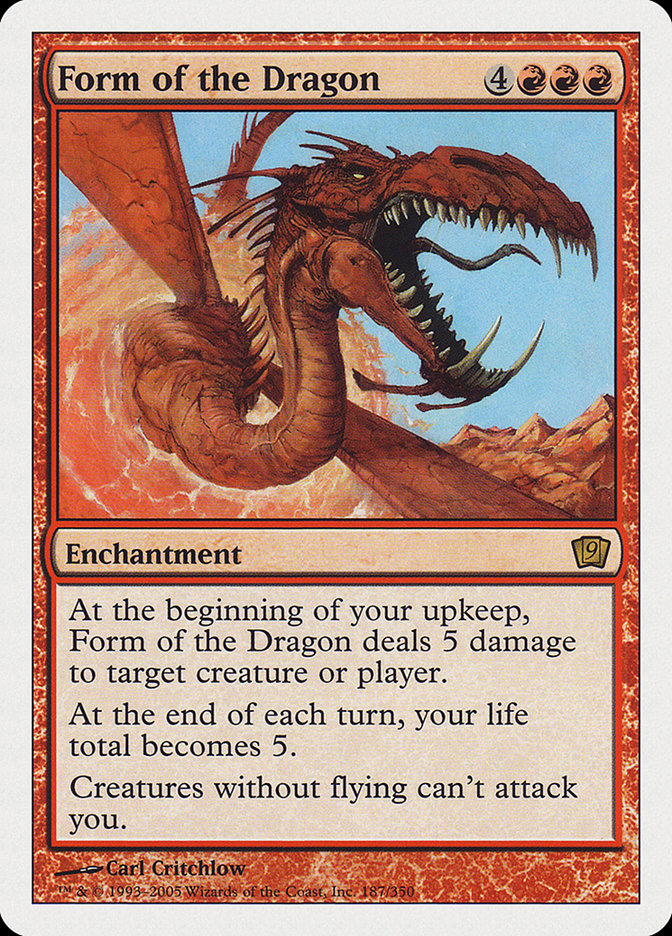
The card has an effect that prevents creatures without flying from attacking you. Red doesn’t do this, but the rest of the card has enough tie to red that it wouldn’t feel right in any other color, so it was allowed to bleed to capture the proper feel of the card. This doesn’t make any significant changes to the game, and it never made a lasting impact after its printing. It was a healthy bleed.
Permanent Changes: A Brief History of MTG Color Flavors

Naturalize | Illustration by James Paick
There are some cases when what colors could do were updated and the changes just stuck. For example, green didn’t always have enchantment removal. That used to be solely white’s job, but it feels right for green to have it because of its natural disagreement with blue and its technology.
Black sees limited enchantment removal, with emphasis on limited. Black isn’t known to be reactive. It deals with things before they happen, and it’s also good at dealing with living things. It doesn’t do too well against non-living forces, which is why you still don’t see much enchantment removal even if it’s starting to get a little more of it here and there.
In the past, blue and black could do a lot of things depending on what color they were fighting. This was a bit too powerful and allowed those colors to do way too much. So, while color changing is an effect that belongs to those colors, you’ll likely never see it printed again.
One more notable change that’s shifted is green’s oddly favorable card advantage. This isn’t something the color always had or been great at. As colors are developed, rotating formats like Standard see constant shifts in terms of what color or colors dominate the battlefield .
Keep an eye on things as the years go on. Changes to color behaviors are sometimes subtle and slow, but you’ll notice them as time goes on.
Moral Alignment and the Color Pie
Anybody play D&D? If you do, you might have noticed something about the colors. The things that each color values and how they achieve their goals correlates pretty fluidly with D&D’s alignment system.
Blue tends to worry less about where it lies morally as long as it can progress, though they don’t push boundaries like black does. Blue sits comfortably in the neutral row, while white claims the lawful column. That would make the Azorius guild Lawful Neutral. At least it would on paper.
The same way that black would seem to hold the row of evil because of its disregard for morality and law. Red dances on the chaotic column, making Rakdos Chaotic Evil while Orzhov would be Lawful Evil.
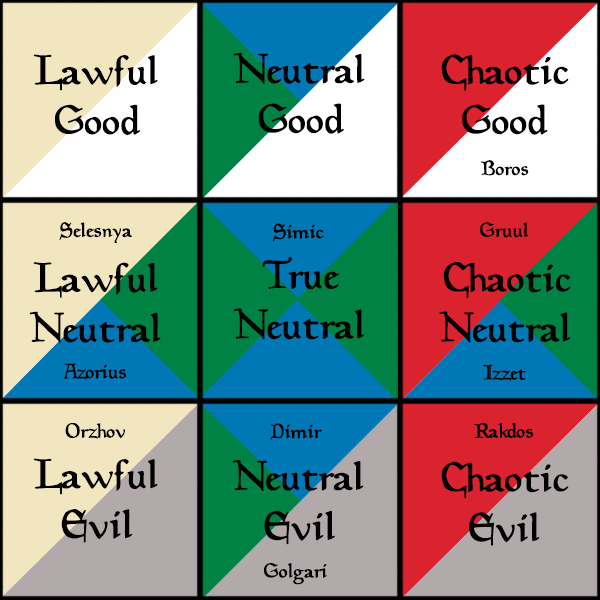
The way these colors fall into an alignment chart is pretty interesting. It might even be something you look at when deciding what kind of mage you are. Maybe you get the basic concept of each color philosophy, but the lines still feel blurred. In that case, refer to their alignment. Deciphering the alignment of a color or combination may help you better understand what kind of philosophy and gameplay you’re getting into.
What Kind of Mage Are You?
The world of Magic is fascinating. These concepts of morality and ideals all contribute to how everyone play the game. You can see how a player’s personality could come out in the cards and decks they use.
The way mechanics and psychology link to create such a vast and diverse range of play styles and unique decks has no limit. Many players like to create decks that are themed around specific characters or ideas. It’s usually pretty easy to see how they come to life through the psychology and philosophies that are buried in the cards’ mechanics. You can start anywhere and unravel a tight collection of gameplay design and human psyche to find what best fits you and create an experience that is wholly unique to you and you alone.
So, all of that raises the question: What kind of mage are you?
You might still have some questions after this absolutely massive spiel we just went through. It’s a ton of info, so ask your questions down in the comments. Or hop over to our Discord for a more in-depth chat.
As always, if you’d like to help support us in making more awesome content you can check out our Patreon. For those of you looking for more, our blog is always bursting with countless new things for you to read.
With all of that said, I’ll see you next time! Stay safe and stay healthy.
Follow Draftsim for awesome articles and set updates: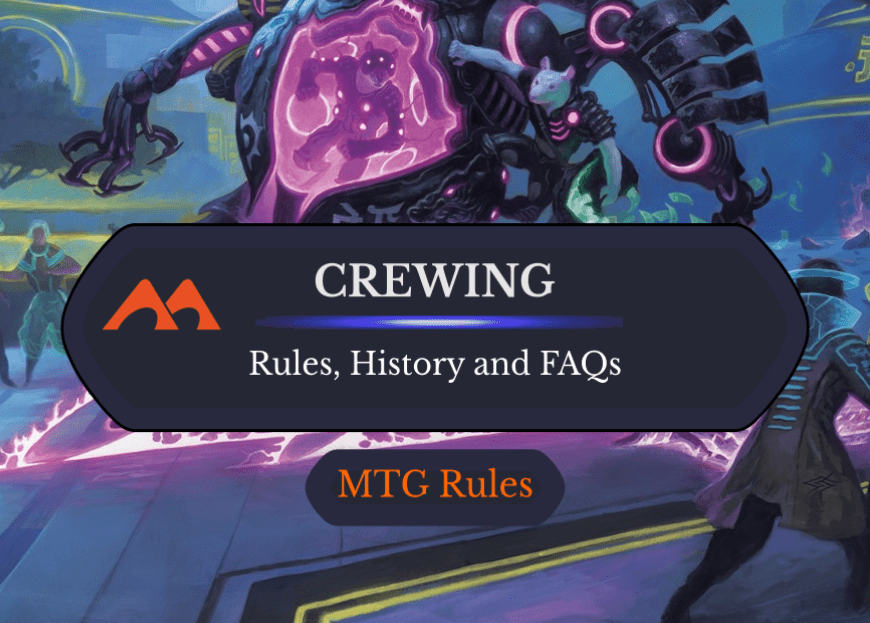
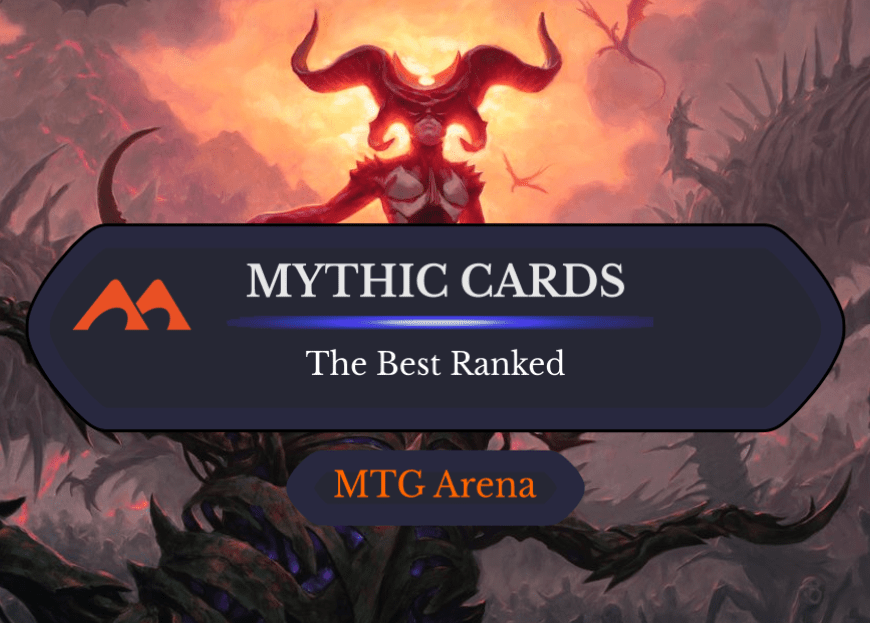
4 Comments
Amazing article! Congrats! Its look like the mechanical section detail is missing . Could you fix, please? Tks!
We’re having an issue with a plugin we have but we’ll get right on this, thanks!
There should be no other attempts to cover this subject because this is its bible. The alignment chart especially blew my mind, even though is seems obvious now. Thanks.
Wow, high praise! Thanks so much, glad we were able to be so helpful 🙂
Add Comment